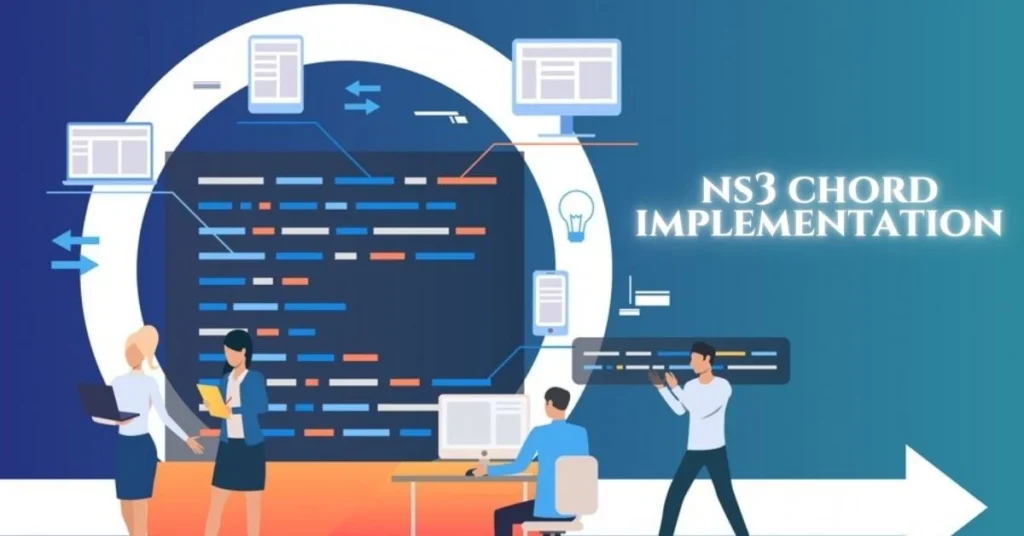Introduction to ns3 chord implementation
The world of network simulations is constantly evolving, and one powerful tool has emerged to capture the attention of researchers and developers alike: the ns3 chord implementation. Imagine a platform that not only provides a deep understanding of distributed systems but also enables you to explore peer-to-peer networking like never before. Whether you’re a seasoned developer or just starting out in network simulation, this comprehensive guide will take you through everything you need to know about ns3 chord implementation.
Get ready to dive into an exciting journey where we unravel its benefits, understand how it works, and provide practical steps for successful implementation. The future of networking lies within your grasp—let’s embark on this exploration together!
What is the ns3 chord implementation?
The ns3 chord implementation is a versatile framework designed for simulating peer-to-peer networks. Built within the ns-3 network simulator, it focuses on the Chord protocol, which enables efficient data storage and retrieval in decentralized systems.
At its core, Chord uses consistent hashing to distribute keys across nodes. This method allows for scalable and fault-tolerant lookup processes. The beauty of the ns3 chord implementation lies in its ability to model these interactions precisely.
Researchers and developers can experiment with various configurations and settings using this tool. It provides insights into how different node behaviors affect overall network performance. Whether you’re analyzing latency or throughput, ns3 offers a detailed view into peer-to-peer dynamics that traditional methods may overlook.
Benefits of using ns3 chord implementation in network simulations
The ns3 chord implementation offers significant advantages for researchers and developers in the field of network simulations. One key benefit is its ability to model peer-to-peer networks efficiently. This reflects real-world applications where decentralized communication is crucial.
Moreover, it simplifies the testing of routing protocols. Users can simulate various scenarios without deploying physical infrastructure, saving both time and resources. It allows experimentation with different configurations, enhancing learning outcomes.
Scalability is another advantage. Researchers can easily adjust parameters to observe how the system behaves under varying loads or conditions. This flexibility fosters innovation in algorithm development.
Additionally, ns3’s open-source nature encourages collaboration within the community. Developers can share insights and improvements, leading to continuous enhancement of the framework’s capabilities and performance metrics.
Such features make ns3 chord an indispensable tool for anyone looking to delve into modern networking challenges effectively.
Understanding the Implementation process
Understanding the implementation process of ns3 chord requires a clear grasp of the underlying mechanics.
First, familiarize yourself with Chord’s distributed hash table (DHT) structure. This involves nodes that act as both clients and servers, facilitating efficient data retrieval.
Next, explore how ns3 models network protocols. Pay attention to routing algorithms used in Chord for node lookups and key management.
Integration is crucial. You’ll need to embed Chord within the ns3 framework effectively for seamless communication among nodes.
Testing your setup comes next. Simulate various scenarios to gauge performance metrics such as latency and throughput.
Documentation plays an essential role too. Create notes on configurations and results for future reference or troubleshooting efforts.
By breaking down these steps, you can navigate through the complexities of implementing ns3 chord without feeling overwhelmed.
Step-by-step guide on implementing ns3 chord
Implementing ns3 chord requires a clear and organized approach. Start by ensuring you have the latest version of ns3 installed on your system.
Next, familiarize yourself with the Chord protocol specifications. This understanding is crucial for effective implementation.
Once you’re ready, create a new simulation script in Python or C++. Define the network topology that will host your Chord nodes. Each node must be represented accurately to reflect their responsibilities.
Incorporate key functionalities such as node joining, leaving, and data lookup processes into your codebase. Make sure to test each component individually before integrating them into the larger framework.
After assembling all parts, run simulations under various scenarios to observe behavior patterns within your network. Debug any issues that arise during these tests promptly to ensure smooth operation as you refine your implementation further.
Common challenges and how to overcome them
Implementing ns3 chord can come with its own set of hurdles. One common challenge is the steep learning curve associated with the network simulator itself. New users often feel overwhelmed by the extensive documentation and advanced features.
Another issue is performance optimization. Large-scale simulations may lead to slow
processing times, which can derail your research timeline. To tackle this, it’s advisable to break down scenarios into smaller segments and run tests iteratively.
Debugging is yet another obstacle faced by many developers. Errors in code or configuration can be frustratingly elusive. Utilizing built-in logging tools effectively helps pinpoint issues more quickly.
Collaboration among team members can also present difficulties if everyone has varying levels of expertise with ns3 chord implementation. Establishing clear communication channels and holding regular knowledge-sharing sessions fosters a collaborative environment that encourages learning from one another.
Conclusion: The future of ns3 chord implementation in network simulations
The future of ns3 chord implementation in network simulations looks promising. As networks grow more complex, the need for robust simulation tools becomes even more critical. The ns3 environment offers researchers and developers a flexible platform to model decentralized systems efficiently.
With ongoing advancements in technology, we can expect further enhancements to the ns3 chord implementation. These improvements will likely lead to better performance metrics and increased accuracy in modeling real-world scenarios. Moreover, as collaborative efforts within the open-source community continue, new features and functionalities may emerge that will simplify user experiences.
As networking paradigms evolve, embracing implementations like ns3’s chord could pave the way for innovative solutions addressing modern communication challenges. Researchers and practitioners are encouraged to explore its capabilities fully, ensuring they remain at the forefront of network simulation technology.
Embracing this tool today not only prepares you for current demands but also positions you well for future developments in networking research and applications. The landscape is ripe with opportunities waiting to be explored through effective simulations provided by ns3’s chord implementation.
ALSO READ: Flixtor.se Overview : Features, Safety, and Alternatives
FAQs
What is “ns3 chord implementation”?
ns3 chord implementation is a framework within the ns-3 network simulator designed to simulate peer-to-peer networks using the Chord protocol. It enables efficient data storage and retrieval in decentralized systems, using consistent hashing for scalable and fault-tolerant key distribution.
How does ns3 chord implementation benefit network simulations?
The ns3 chord implementation simplifies the modeling of peer-to-peer networks, allowing researchers to experiment with different configurations without physical infrastructure. It helps test routing protocols, scales well for varying loads, and supports collaboration through its open-source nature.
What is the process of implementing ns3 chord?
Implementing ns3 chord involves understanding the Chord protocol, setting up the network topology, and incorporating essential functions like node joining, leaving, and data lookups. After integration, simulations should be tested under various scenarios for performance analysis.
What challenges might occur when using ns3 chord implementation?
Common challenges include the steep learning curve of the ns3 simulator, slow processing times in large-scale simulations, and debugging issues. To overcome them, break scenarios into smaller segments, use built-in logging tools, and encourage collaboration among team members.
What is the future of ns3 chord implementation in network simulations?
The future looks promising with continuous advancements in technology. Further enhancements will likely improve performance metrics and the accuracy of modeling real-world scenarios. Ongoing community collaboration will also lead to new features and functionalities to simplify user experiences.







